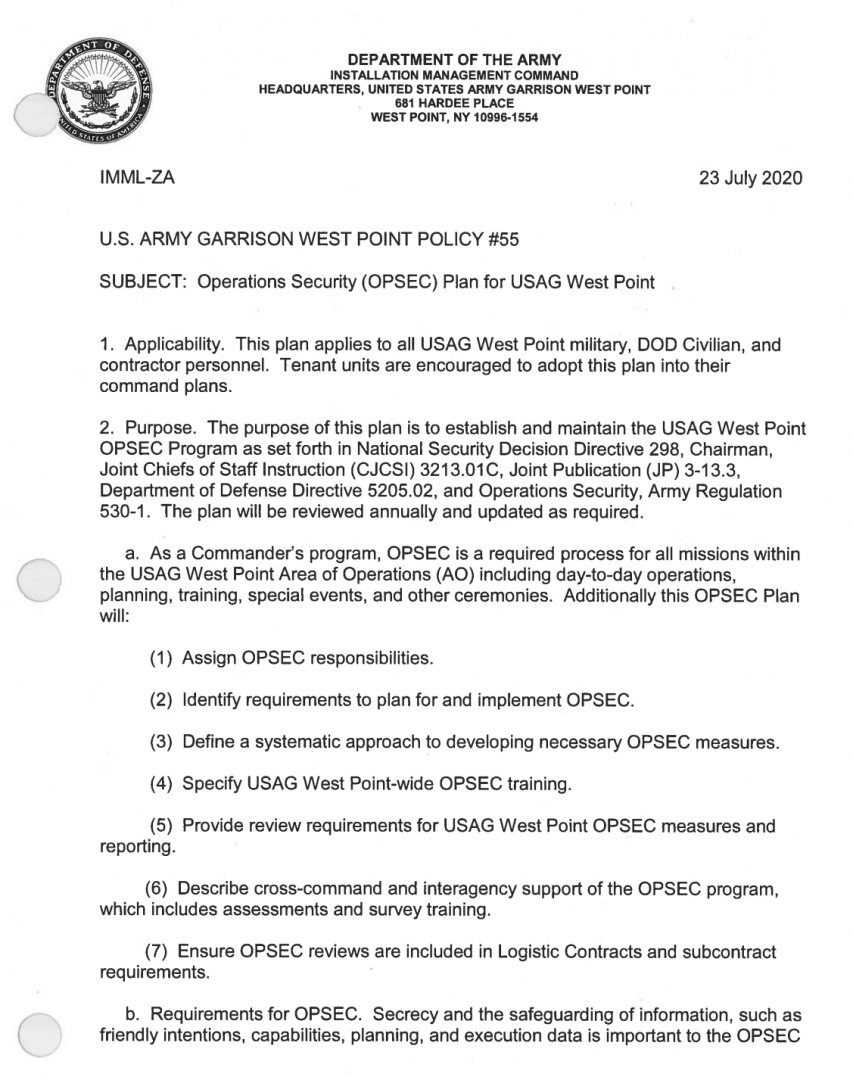OPSEC: The Evolution and Significance of Operational Security

Operations Security (OPSEC) is a strategic approach to safeguarding valuable data from potential adversaries. Originally coined by the U.S. military during the Vietnam War, this process pinpoints critical information that could benefit opponents if misappropriated. OPSEC assesses whether friendly actions are observable by enemy intelligence, interprets the usefulness of any gathered data to adversaries, and employs strategies to mitigate adversary exploitation of sensitive information. The framework and efficacy of OPSEC have undergone considerable evolution since its inception.
The Genesis of OPSEC

In 1966, the U.S. Admiral Ulysses Sharp commissioned a multidisciplinary security team dubbed Operation Purple Dragon, comprising experts from the National Security Agency and the Department of Defense. Their mission was to examine the shortcomings of certain combat operations during the Vietnam War. After thorough analysis, they outlined a set of guidelines known as “Operations Security“.
The Five-Step OPSEC Process
OPSEC has evolved into a systematic five-step iterative process that aids organizations in identifying key information warranting protection and devising protective strategies:
1. Identification of Critical Information: This involves singling out details about friendly intentions, capabilities, and activities that adversaries could exploit to disrupt operations. As per U.S. Army Regulation 530-1, critical information can be categorized into Capabilities, Activities, Limitations (including vulnerabilities), and Intentions (CALI).

This step culminates in a Critical Information List (CIL), enabling organizations to prioritize vital information protection instead of safeguarding all classified or sensitive unclassified information. Such critical data may encompass military deployment schedules, internal organizational information, or security measures details.
2. Analysis of Threats: Adversaries intent on compromising friendly operations pose threats. Threat analysis, using intelligence, law enforcement, and open source data, helps identify and prioritize probable adversaries for a planned operation.
3. Analysis of Vulnerabilities: This step involves scrutinizing each facet of the planned operation to identify OPSEC indicators potentially revealing critical information and comparing them with the adversary’s intelligence gathering capabilities.
4. Assessment of Risk: After identifying vulnerabilities, OPSEC measures are selected based on a risk assessment by the commander and staff. Risk determination is a function of the likelihood of critical information disclosure and the potential consequences of such an occurrence.
5. Application of Appropriate OPSEC Measures: The chosen OPSEC measures are then implemented. These must be persistently monitored to ensure ongoing protection of current information against pertinent threats.
The OPSEC Assessment
An OPSEC Assessment is a formal application of this process to existing operations or activities. A team of multidisciplinary experts conducts this assessment to discern the need for additional OPSEC measures and any modifications to the existing ones. Collaborating with Public Affairs personnel, OPSEC planners develop Essential Elements of Friendly Information (EEFI) to prevent accidental public disclosure of critical or sensitive data. The term “EEFI” is gradually being replaced by “Critical Information” to ensure consistent terminology and avoid confusion across all involved agencies.
OPSEC in the Contemporary Era
In 1988, President Ronald Reagan ratified the National Security Decision Directive (NSDD) 298, establishing the National Operations Security Program and appointing the Director of the National Security Agency as its head. This institutionalized OPSEC within the federal government and extended its principles beyond the military to businesses and personal security domains.
Today, OPSEC remains a critical element of national security and corporate information security strategies. Although the core principles have persisted, OPSEC tactics and tools have adapted to the digital age, emphasizing the continued relevance and importance of this process.



